Post here any info you have on Corona Discharges so researchers can learn more about this interesting electrical phenomena.
"In electricity, a corona discharge is an electrical discharge brought on by the ionization of a fluid surrounding a conductor, which occurs when the potential gradient (the strength of the electric field) exceeds a certain value, but conditions are insufficient to cause complete electrical breakdown or arcing."
Here are some photos of devices making Corona Discharges.
From Turn Of The Century Electrotherapeutic Devices interesting website:
The Turn Of The Century Electrotherapy Museum Tesla Library
Small coil, but exhibits phantom streamers and interesting corona effects. High energy high current 40kV doorknob cap .002 mfd (retails for $139+!), 6 brass segments with 1/4" tungsten for 3 series spark
gap, two Tesla / Oudin Coils - fine wire, and coarse wire!
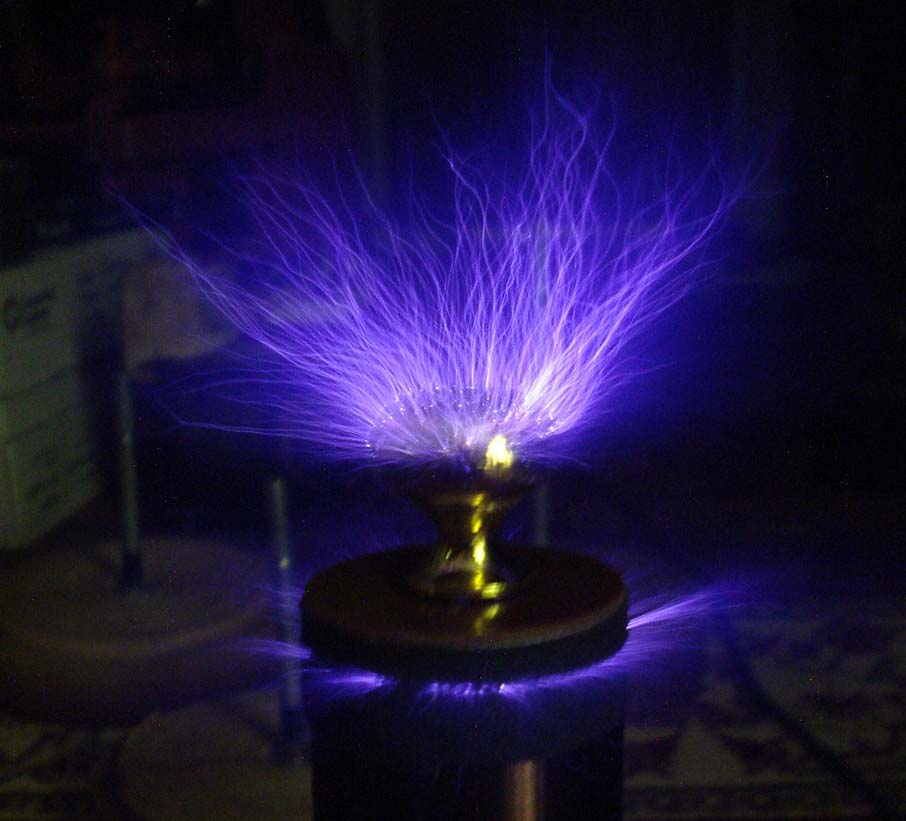
A neat coil, approx. 1.8 MHz!
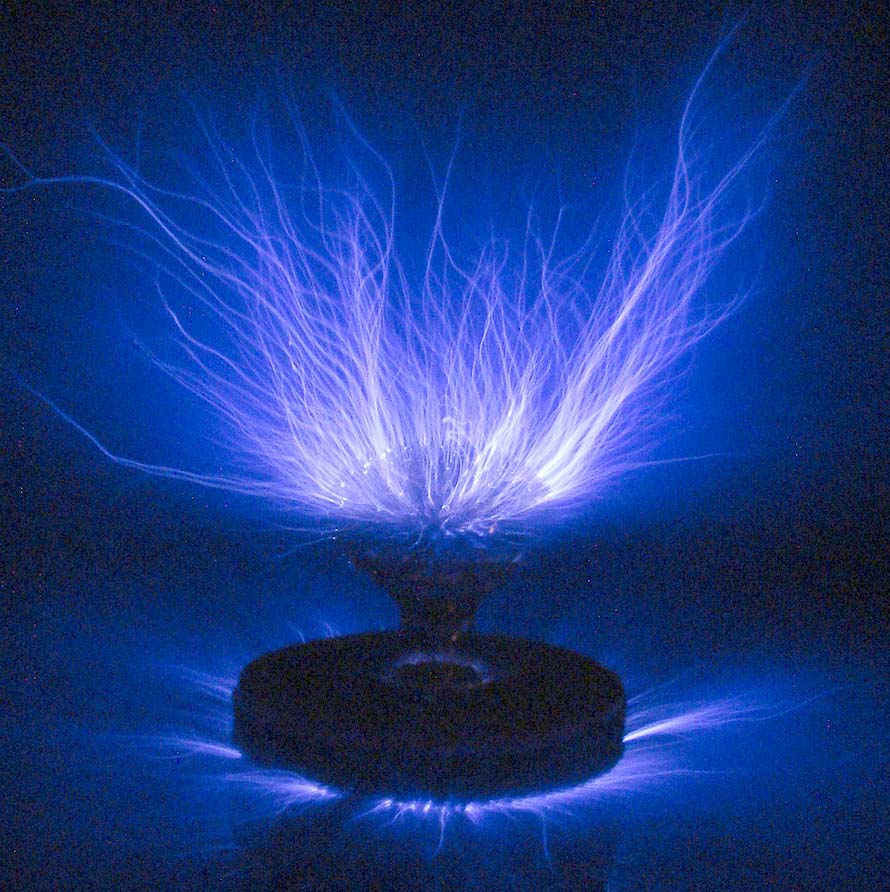
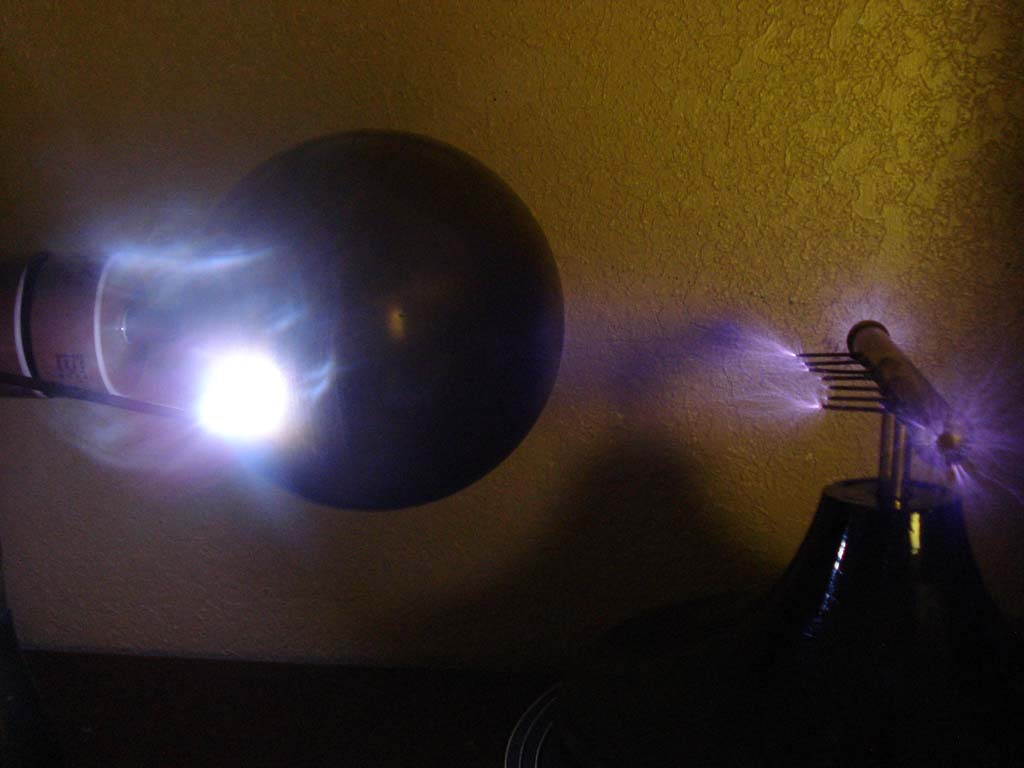
This coil was used as part of a new design of corona rectifier for producing Static Electricity, Tesla Currents,
Morton Currents, and a combined modified Static Electric-Tesla Discharge.
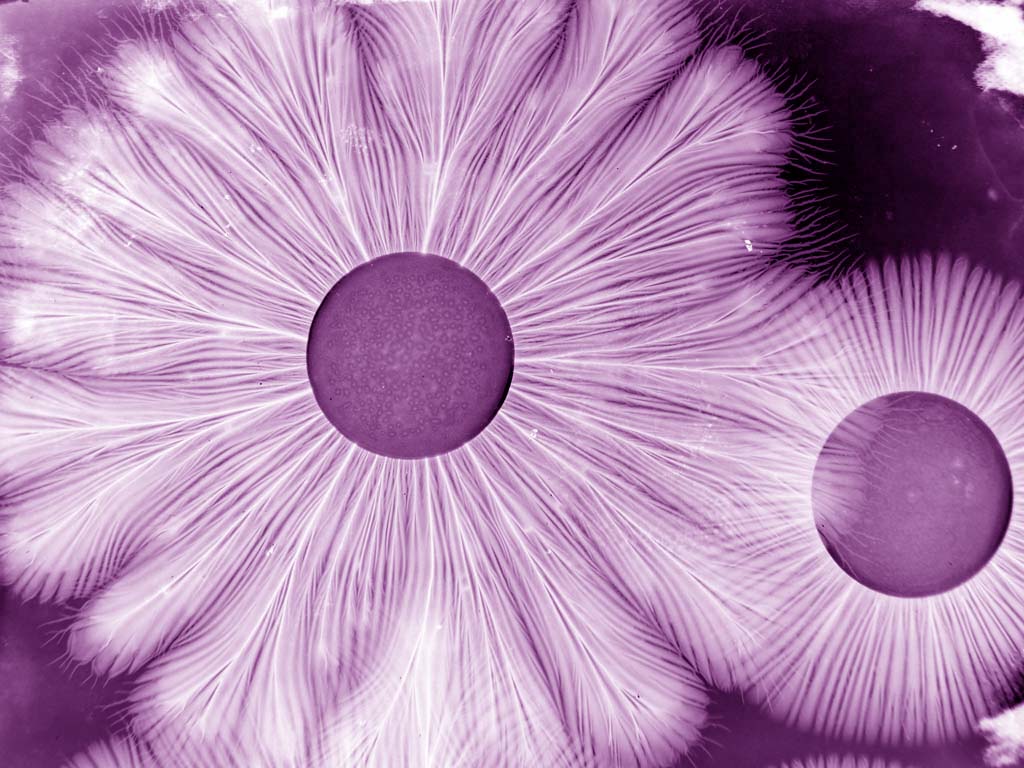
Positive tips barely seen at the ends of negative streams. Under this situation (where mainly negative streams are produced) a hand held
in the path of the streams is bombarded by rod-like discharges 1/4" in diameter or more, often seen with bright striations near
the hand.
These streams produce a slight blistering effect on the skin if allowed in one location for more than a few seconds.
This effect is not as pronounced with the positive streams, but the danger is still present. It is probable that a combination
of the dehydrating properties of high frequency currents on tissues and the intense UV present is responsible for this,
in addition to intense ozone and nitric acid produced locally... the percentage of these gases produced is much higher
than with Tesla Coils operating in a normal manner. While it is common to employ corona discharges to produce ozone,
these coils seem to be more efficient for the purpose - the discharge in some instances covers a sphere of area 16 - 24"
in diameter!
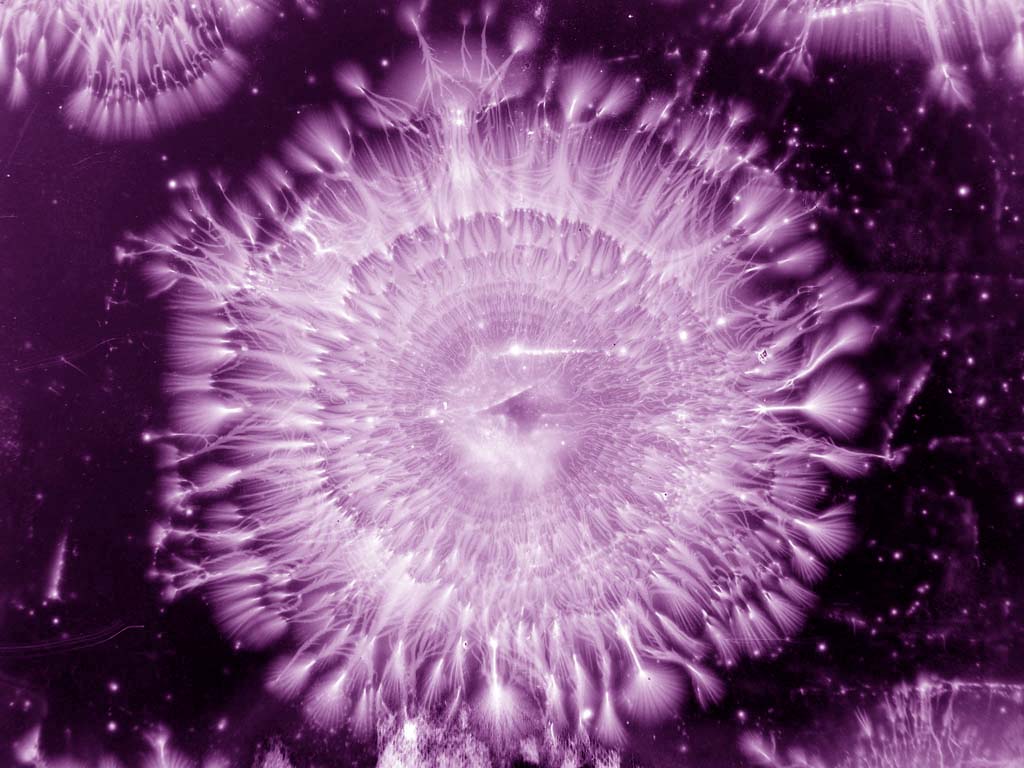
Regards, Mike R.
"In electricity, a corona discharge is an electrical discharge brought on by the ionization of a fluid surrounding a conductor, which occurs when the potential gradient (the strength of the electric field) exceeds a certain value, but conditions are insufficient to cause complete electrical breakdown or arcing."
Here are some photos of devices making Corona Discharges.
From Turn Of The Century Electrotherapeutic Devices interesting website:
The Turn Of The Century Electrotherapy Museum Tesla Library
Small coil, but exhibits phantom streamers and interesting corona effects. High energy high current 40kV doorknob cap .002 mfd (retails for $139+!), 6 brass segments with 1/4" tungsten for 3 series spark
gap, two Tesla / Oudin Coils - fine wire, and coarse wire!

A neat coil, approx. 1.8 MHz!

This coil was used as part of a new design of corona rectifier for producing Static Electricity, Tesla Currents,
Morton Currents, and a combined modified Static Electric-Tesla Discharge.
Positive tips barely seen at the ends of negative streams. Under this situation (where mainly negative streams are produced) a hand held
in the path of the streams is bombarded by rod-like discharges 1/4" in diameter or more, often seen with bright striations near
the hand.
These streams produce a slight blistering effect on the skin if allowed in one location for more than a few seconds.
This effect is not as pronounced with the positive streams, but the danger is still present. It is probable that a combination
of the dehydrating properties of high frequency currents on tissues and the intense UV present is responsible for this,
in addition to intense ozone and nitric acid produced locally... the percentage of these gases produced is much higher
than with Tesla Coils operating in a normal manner. While it is common to employ corona discharges to produce ozone,
these coils seem to be more efficient for the purpose - the discharge in some instances covers a sphere of area 16 - 24"
in diameter!
Regards, Mike R.
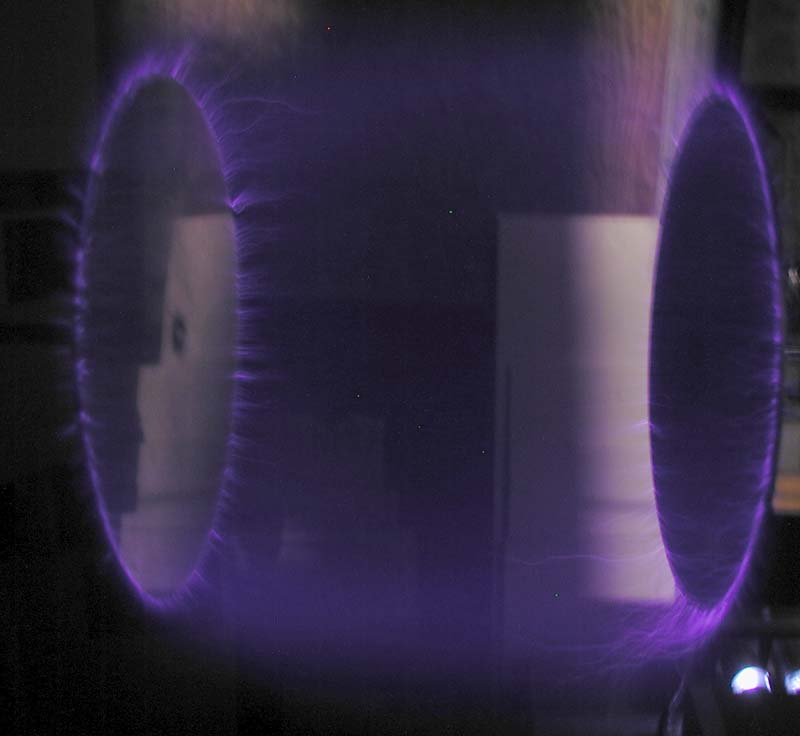
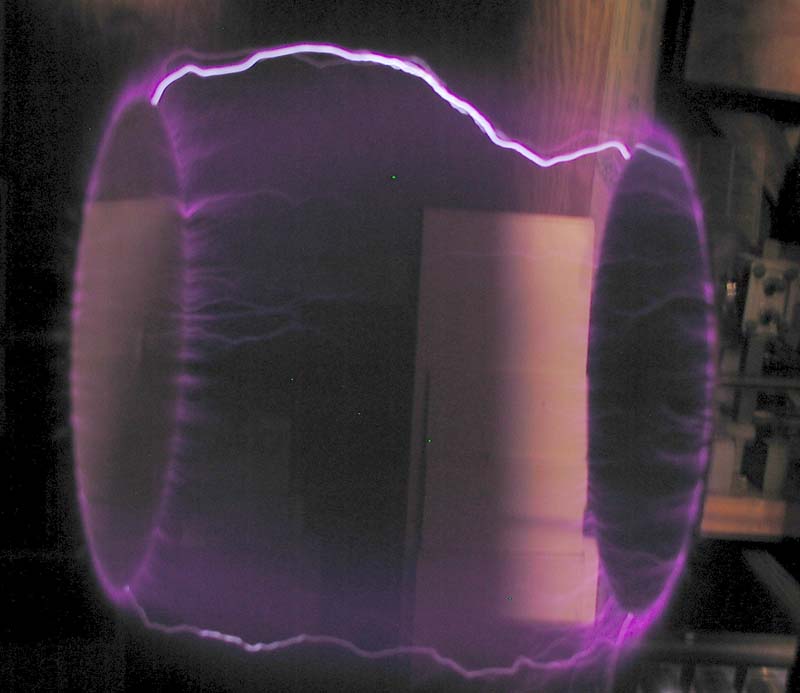
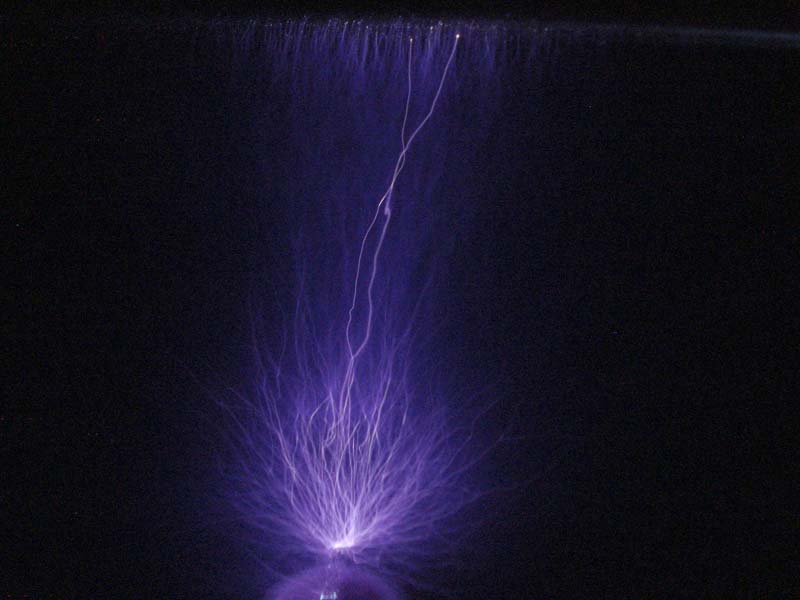
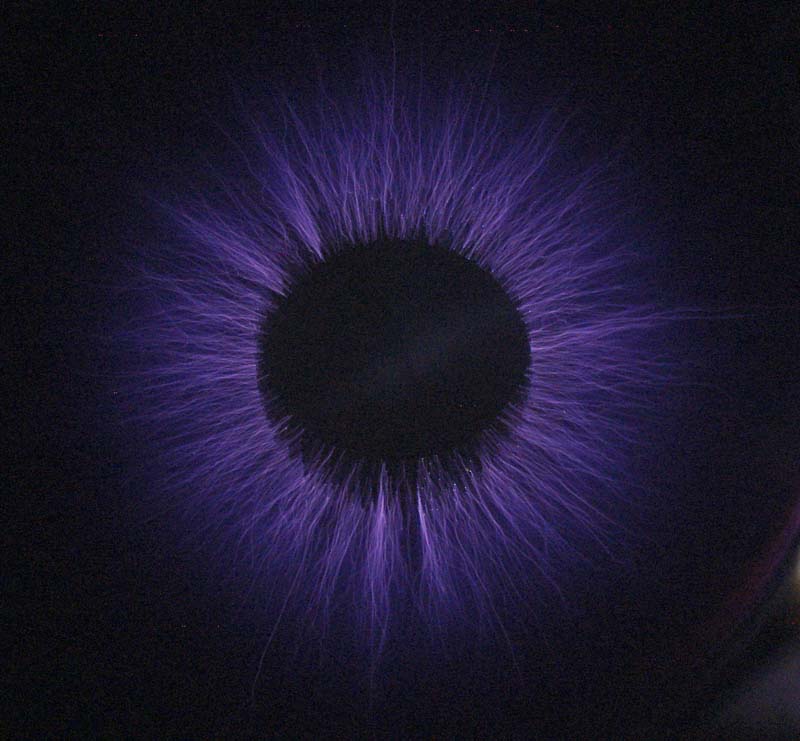
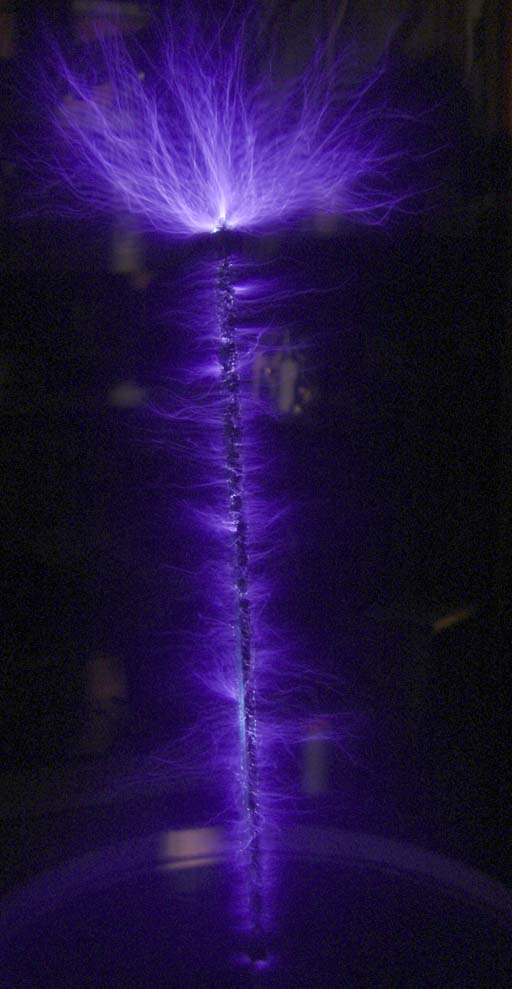
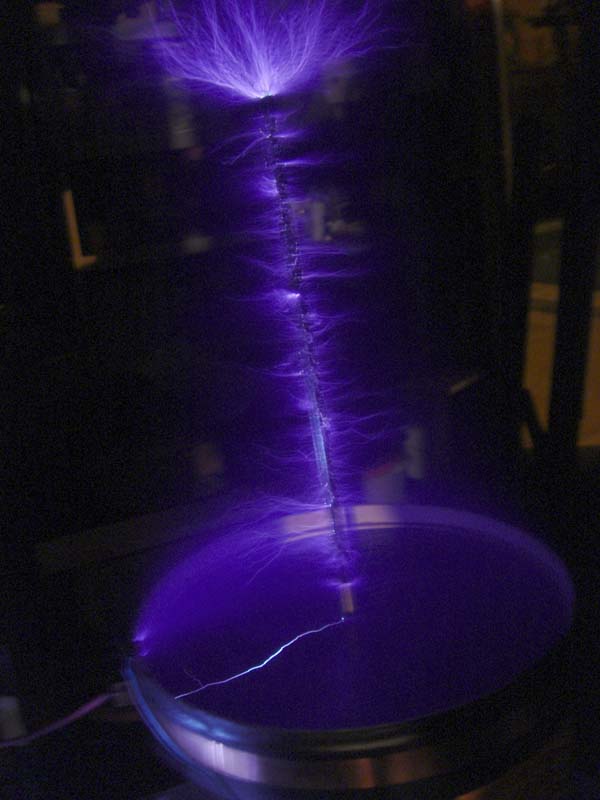
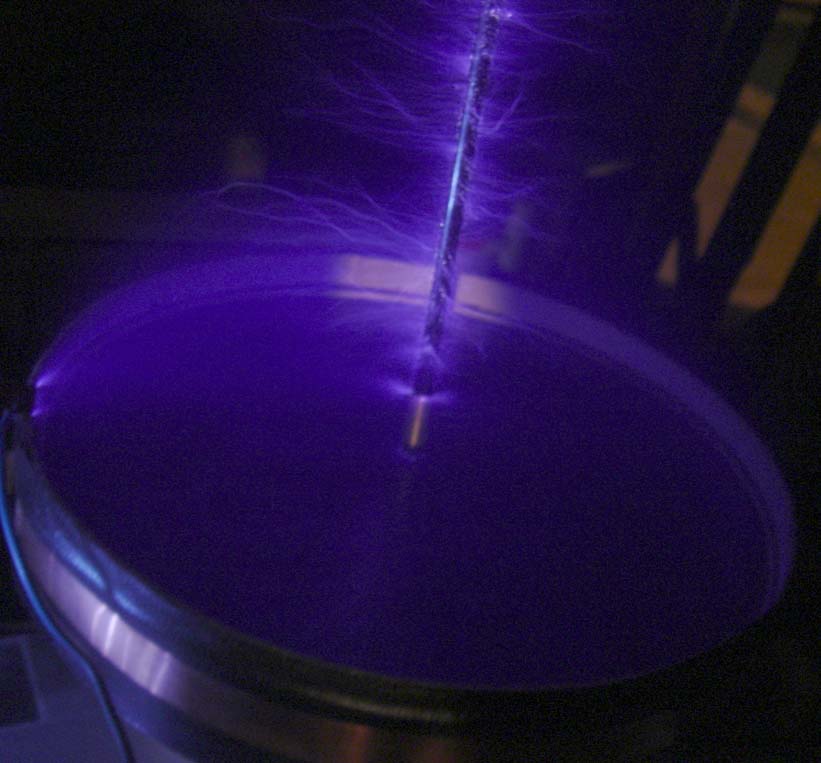



















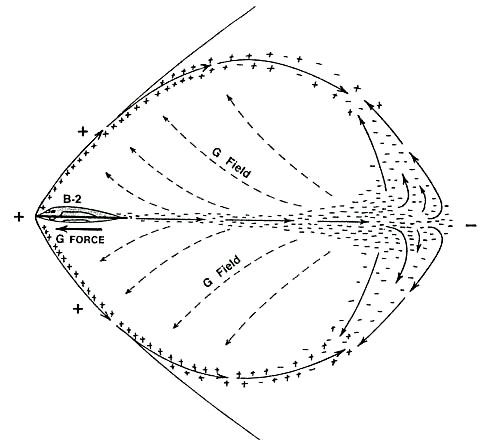
Comment